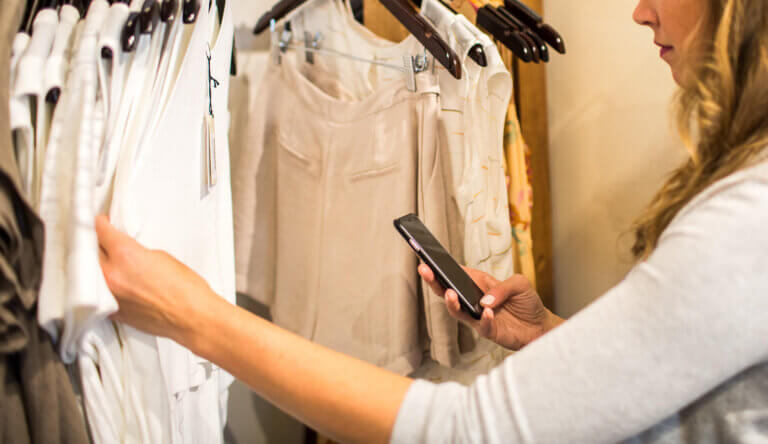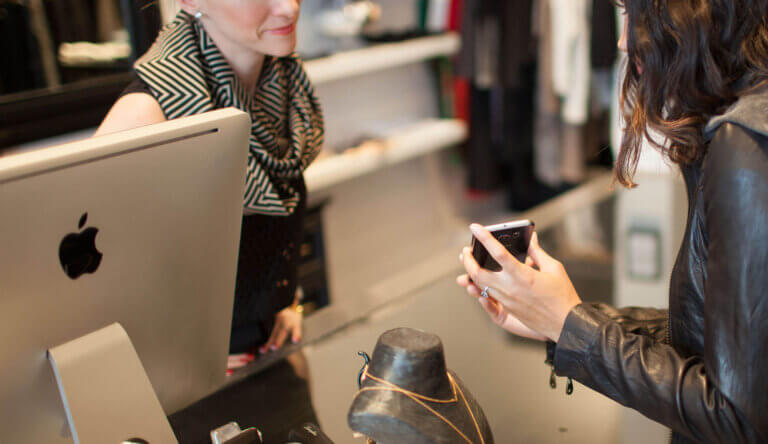
Tech in Retail: Trends & Takeaways from Shoptalk

Share to my network
In this article
Categories
Book a meeting
Connect with our team of experts to discuss your conversion and loyalty goals, and how we can help you achieve them faster.
Get a demoRecently, more than 5,000 CEOs, VPs, VCs, tech entrepreneurs,and marketers from the world’s best known retail brands and their partners gathered in Vegas for Shoptalk 2017 to discuss what’s working in retail, what isn’t and how to stay relevant in an ever changing, always challenging environment.
Here are a few of the key trends and takeaways:
Rise of Artificial Intelligence (AI) and Augmented Reality (AR) in Retail
The idea of marketing to the masses no longer exists, as evidenced by the recent closure of many beloved, legacy brands. It’s clear that retail has to get “smart.”
Shoptalk was abuzz with discussions with how brands are turning to AI — via chatbots and personal assistants — to personalize and improve the in-store and digital retail experience.
We’re also starting to see robots deployed to greet customers, give directions and provide product information, leaving store clerks free to focus on other tasks.
In addition, there was a lot of talk about using AR for in-store navigation, product searches, and more — saving time for customers while also delivering a better in-store experience. The concept of using AR in a navigation app is akin to the experience we’re all familiar with — Pokémon Go — where offline and online meet.
>> Want more retail insights? See all of our posts for mobile marketers working with retail brands here.
Apps Are Still Where It’s At for Retailers
If AI and AR served a more aspirational outlook, then mobile was its down to earth counterpart.
It’s no secret that mobile web drives a lot visits for retailers, but conversion rates are lower than desktops. Apps however, are a bright spot; retail apps tend to resonate well with loyal consumers.
Kohl’s CEO, Kevin Mansell, indicated one of Kohl’s best performing assets is its in-app digital wallet, which allows customers to transact — via contactless payments with a Kohl’s card — and to accumulate points. Bringing “smart retailing” is about building the right set of tools that interacts with customers in the moment, with timely, relevant and convenient tools and messaging.
Using Data to Take Action & Stay Current
Uri Minkoff of Rebecca Minkoff highlighted that retail is under siege: “…digital is growing, but at nowhere near the pace of the decline of stores.”
Minkoff also said that “future proofing and digital transformation are necessities,” and if you want to survive, you have to get ahead with data, because “the paradigm is blowing up.”
Minkoff talked about using data to see what’s selling today, what’s trending, and what the current sentiment is on social, and then integrating all of that — not in a spreadsheet, but to be served up by personal assistants such as Alexa. Essentially, what you want is actionable data you can use in real-time. Minkoff noted that with data, you need partners. Whether these partners are social influencers or start ups, they are helping to rewrite retailing.
Visionary Leadership Required
CEO of Walmart’s eCommerce Group, Marc Lore, echoed similar comments. From Walmart’s acquisition of his company Jet.com to leading Walmart.com and all of its online properties, he noted companies need to take risky and bold moves to move the needle.
For legacy companies, boards of directors have to be willing to hand over the keys so leadership can seek out best in class mobile/data technologies and do things differently, if that’s what it takes.
My Key Takeaways
Reflecting on the conference, it’s clear that retailers need to think about collecting data at every touchpoint during a customer journey. This means investing in planning, building the flexibility into the platform to allow for testing and observation. Not only is this not a light lift, but it’s painstaking work to understand the full journey, and inferring the underlying reasons why customers do what they do.
For instance, how do customers tell a brand they like anonymous checkout without telling the brand directly? How would retailers go about uncovering this type of insight? What data points are needed and what needs to get triangulated? For retailers, that’s just one example of the challenge.
To that end, I’ve noticed a growing number of business roles in retail that include “innovation” in the title. And today, innovation is the intersection of digital to in-store to data to mobile. With more at stake than ever, retailers need to dramatically shift, and make best use of technology to rise to the top.

